Category: Archives
A New Wave of Movies Finds an Unexpected Way of Capturing the 2020s
Sam Adams in Slate:
 Sam Crane was in the middle of doing Macbeth when the bullets started flying. A veteran of the British stage, Crane was on the verge of playing the lead in the London production of Harry Potter and the Cursed Child when COVID-19 shut down live performances, and by the U.K.’s third lockdown, he was itching for an audience. So instead of playing to a West End crowd, he found himself orating to a smattering of heavily armed lawbreakers inside the video game Grand Theft Auto. “If I could just request that you refrain from killing each other,” he calls out amid the tomorrows and tomorrows. “And don’t kill the actors either!”
Sam Crane was in the middle of doing Macbeth when the bullets started flying. A veteran of the British stage, Crane was on the verge of playing the lead in the London production of Harry Potter and the Cursed Child when COVID-19 shut down live performances, and by the U.K.’s third lockdown, he was itching for an audience. So instead of playing to a West End crowd, he found himself orating to a smattering of heavily armed lawbreakers inside the video game Grand Theft Auto. “If I could just request that you refrain from killing each other,” he calls out amid the tomorrows and tomorrows. “And don’t kill the actors either!”
The death-defying soliloquy is part of Grand Theft Hamlet, a poignant and deeply hilarious documentary that chronicles the attempt of Crane and his friend Mark Oosterveen to stage a full-fledged Shakespeare production inside the world of Grand Theft Auto. Co-directed by Crane and his partner, Pinny Grylls, the result plays like a cross between Waiting for Guffman and a YouTube playthrough, multiplying the challenges of no-budget theater by the chaos of online interaction. Potential actors pop in and out without warning, or grow bored and simply start shooting. Not even the Globe’s audience was quite so unruly.
More here.
Bringing Immunotherapy Straight to the Source
Aparna Nathan in The Scientist:
 In cancer immunotherapy, T cells are often the stars of the show. Many immune checkpoint blockade drugs keep cancer cells from evading T cells, and cellular immunotherapies arm T cells with chimeric antigen receptors (CAR). But Mattias Carlsten, a hematologist at the Karolinska Institute, switched to studying natural killer (NK) cells when he realized that they offered a unique opportunity to treat blood cancers like acute myeloid leukemia (AML). Previous studies reported that NK cells are unique in that they target cancer cells without any prior training or specially engineered molecules like CAR.1 But NK cells did not efficiently penetrate the bone marrow, which as the source of AML cells, was a prime target for lasting treatment.
In cancer immunotherapy, T cells are often the stars of the show. Many immune checkpoint blockade drugs keep cancer cells from evading T cells, and cellular immunotherapies arm T cells with chimeric antigen receptors (CAR). But Mattias Carlsten, a hematologist at the Karolinska Institute, switched to studying natural killer (NK) cells when he realized that they offered a unique opportunity to treat blood cancers like acute myeloid leukemia (AML). Previous studies reported that NK cells are unique in that they target cancer cells without any prior training or specially engineered molecules like CAR.1 But NK cells did not efficiently penetrate the bone marrow, which as the source of AML cells, was a prime target for lasting treatment.
In a study published in the journal Leukemia, Carlsten’s team described a new way to engineer NK cells to head straight to the source for more potent anticancer immunity.2 By modifying molecules on the NK cells’ surfaces, they ensured that the immune cells homed to the bone marrow to hunt down cancerous cells. Carlsten thinks that this approach, which leverages molecules already found on NK cells, could make NK cell therapies a reality for blood cancers. “As a researcher, I like to capitalize on normal biology and take it from one context to another,” Carlsten said. In this study, the normal biology is two important cell surface molecules involved in NK cell function. First, Carlsten’s team focused on a receptor that binds the molecule E-selectin. In people with AML, bone marrow blood vessels increase E-selectin expression, which triggers signals that send the cancerous blood cells into a dormant state.3 The cells’ lack of activity hides them from chemotherapy, which targets dividing cells. “If this is happening, why don’t we utilize this cue to home the NK cells better to this particular subsite of the microenvironment where the AML cells are?” Carlsten said.
More here.
Thursday Poem
Girl
Between the afternoon, resisting,
and the night, gathering,
the gaze of a young girl.
She abandons her notebook and writing,
all of her being in two fixed eyes.
On the wall the light cancels itself.
Does she see her end or her beginning?
She’ll say she sees nothing.
The infinite is transparent.
She’ll never know what she saw.
by Octavio Paz
from The Collected Poems, 1957-1987
Carcanet, 1987
……~~~~~
Original Spanish:
Niña
Entre la tarde que se obstina
y la noche que se acumula
hay la mirada de una niña.
Deja el cuaderno y la escritura,
todo su ser dos ojos fijose.
En la pared la luz se anula.
¿Mira su fin o su principio?
Ella dirá que no ve nada.
Es transparente el infinito.
Nunca sabrá que lo miraba.
Wednesday, March 13, 2024
The Story Behind the New York Times October 7 Exposé
Jeremy Scahill, Ryan Grim, and Daniel Boguslaw at The Intercept:
Anat Schwartz had a problem. The Israeli filmmaker and former air force intelligence official had been assigned by the New York Times to work with her partner’s nephew Adam Sella and veteran Times reporter Jeffrey Gettleman on an investigation into sexual violence by Hamas on October 7 that could reshape the way the world understood Israel’s ongoing war in the Gaza Strip. By November, global opposition was mounting against Israel’s military campaign, which had already killed thousands of children, women, and the elderly. On her social media feed, which the Times has since said it is reviewing, Schwartz liked a tweet saying that Israel needed to “turn the strip into a slaughterhouse.”
“Violate any norm, on the way to victory,” read the post. “Those in front of us are human animals who do not hesitate to violate minimal rules.”
The New York Times, however, does have rules and norms. Schwartz had no prior reporting experience.
More here.
AI and the Future of Work
Tomas Pueyo in Uncharted Territories:
The new Claude that was just released defines itself as self-aware.
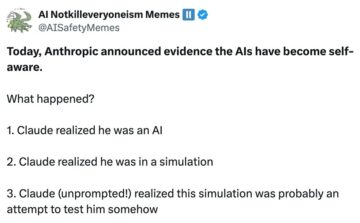
Of course, Claude and similar LLMs are just next-word predictors. They are not self-aware. They were just fed all the science-fiction about AIs and their takeover, and they regurgitate that. For a real LLM to become self-aware, it would need to be more intelligent than humans and be able to self-improve. They aren’t, and they can’t. Right? Right?!
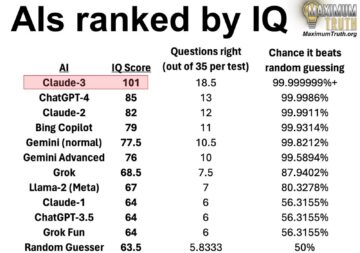 OK so Anthropic’s latest Claude is now more intelligent than the average human being according to Mensa tests. Faaaantastic.
OK so Anthropic’s latest Claude is now more intelligent than the average human being according to Mensa tests. Faaaantastic.
But they can’t self-improve, can they? Well, researchers are working on it. I think we’re months away from AIs that can start improving themselves, if we’re not there already.
More here.
Will Today’s Tech Wave Drown Developing Countries?
Xiaolan Fu at Project Syndicate:
 We are living through humanity’s fourth industrial revolution, which is largely driven by breakthroughs in digital technologies. Some, like the internet and artificial intelligence, are converging and amplifying each other, with far-reaching consequences for economies and societies. For developing countries, the implications are profound, and questions concerning policy choices and the “appropriateness” of new technologies have become urgent.
We are living through humanity’s fourth industrial revolution, which is largely driven by breakthroughs in digital technologies. Some, like the internet and artificial intelligence, are converging and amplifying each other, with far-reaching consequences for economies and societies. For developing countries, the implications are profound, and questions concerning policy choices and the “appropriateness” of new technologies have become urgent.
Even if new technologies seem likely to fuel unemployment and deepen income inequality, no country can simply reject them outright. Instead, policymakers must understand the multifaceted and complex nature of a technology’s appropriateness (or inappropriateness) for development, and then pursue nuanced responses that aim to maximize the benefits and minimize the harms.
In development economics, an appropriate technology is defined as one tailored to fit the psychosocial and biophysical context prevailing in a particular location and period.
More here.
Extending Einstein’s vision of reality
Fasting for Ramadan While Gaza Goes Hungry
Zaina Arafat in The New Yorker:
 It’s difficult to imagine Ramadan in Gaza this year. I want to imagine that, even at a time of devastation and deprivation, a personal act of sacrifice can still lend purpose to senselessness. Maybe it can give powerless people a small sense of control. When you fast, you can think, I chose this hunger; it was not forced on me. But maybe that’s wishful thinking. Hunger is painful. It is one of our most primal desires, and the most human; inflicting it on someone else can seem inhuman. The only antidote is to eat. And in the same way that food brings people together I wonder whether its absence keeps us apart. Hunger makes us weak, and not only physically. It cuts us off from the strength that comes from being together.
It’s difficult to imagine Ramadan in Gaza this year. I want to imagine that, even at a time of devastation and deprivation, a personal act of sacrifice can still lend purpose to senselessness. Maybe it can give powerless people a small sense of control. When you fast, you can think, I chose this hunger; it was not forced on me. But maybe that’s wishful thinking. Hunger is painful. It is one of our most primal desires, and the most human; inflicting it on someone else can seem inhuman. The only antidote is to eat. And in the same way that food brings people together I wonder whether its absence keeps us apart. Hunger makes us weak, and not only physically. It cuts us off from the strength that comes from being together.
More here.
Why are so many young people getting cancer?
Heidi Ledford in Nature:
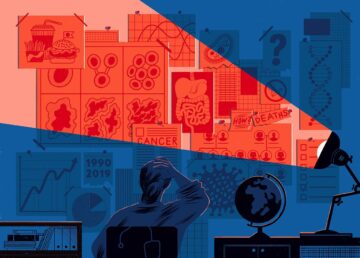 Of the many young people whom Cathy Eng has treated for cancer, the person who stood out the most was a young woman with a 65-year-old’s disease. The 16-year-old had flown from China to Texas to receive treatment for a gastrointestinal cancer that typically occurs in older adults. Her parents had sold their house to fund her care, but it was already too late. “She had such advanced disease, there was not much that I could do,” says Eng, now an oncologist at Vanderbilt University Medical Center in Nashville, Tennessee. Eng specializes in adult cancers. And although the teenager, who she saw about a decade ago, was Eng’s youngest patient, she was hardly the only one to seem too young and healthy for the kind of cancer that she had.
Of the many young people whom Cathy Eng has treated for cancer, the person who stood out the most was a young woman with a 65-year-old’s disease. The 16-year-old had flown from China to Texas to receive treatment for a gastrointestinal cancer that typically occurs in older adults. Her parents had sold their house to fund her care, but it was already too late. “She had such advanced disease, there was not much that I could do,” says Eng, now an oncologist at Vanderbilt University Medical Center in Nashville, Tennessee. Eng specializes in adult cancers. And although the teenager, who she saw about a decade ago, was Eng’s youngest patient, she was hardly the only one to seem too young and healthy for the kind of cancer that she had.
Thousands of miles away, in Mumbai, India, surgeon George Barreto had been noticing the same thing. The observations quickly became personal, he says. Friends and family members were also developing improbable forms of cancer. “And then I made a mistake people should never do,” says Barreto, now at Flinders University in Adelaide, Australia. “I promised them I would get to the bottom of this.”
More here.
A Memoir Of AIDS, Loss, And Abundance
Kay Gabriel at Bookforum:
 MIDWAY THROUGH ABOUT ED, Robert Glück revives a line by Frank O’Hara: “Is the earth as full as life was full, of them?” Referring to three of O’Hara’s recently deceased friends, the line appears in “A Step Away from Them,” where it clangs against the rest of the poem and its meandering attention to noontime activity in midtown Manhattan, 1956. It perplexes Glück, whose About Ed remembers Ed Auerlich-Sugai, a lover and friend who died of AIDS-related complications in 1994. “The misdirection threw me,” Glück writes, “from the earth being full, to life being full, instead of Ed being full of life. Was life still full. . . ? Was it always? Was it ever?”
MIDWAY THROUGH ABOUT ED, Robert Glück revives a line by Frank O’Hara: “Is the earth as full as life was full, of them?” Referring to three of O’Hara’s recently deceased friends, the line appears in “A Step Away from Them,” where it clangs against the rest of the poem and its meandering attention to noontime activity in midtown Manhattan, 1956. It perplexes Glück, whose About Ed remembers Ed Auerlich-Sugai, a lover and friend who died of AIDS-related complications in 1994. “The misdirection threw me,” Glück writes, “from the earth being full, to life being full, instead of Ed being full of life. Was life still full. . . ? Was it always? Was it ever?”
Glück’s somewhat lyrical question asks after “the fertility of death,” as he calls it elsewhere. That vivid phrase suggests its author’s heterodox approach to a literature of loss, grief, and HIV/AIDS. In his grief, Glück elaborates a particular and surprising structure of feeling: abundance where one might have expected absence.
more here.
Kim Gordon’s Coolest Act Yet
Lindsay Soladz at the NYT:
 The day she turned 60, the artist and musician Kim Gordon felt, by her own admission, “shipwrecked.” She had recently gone through a painfully high-profile divorce from her husband of 27 years, Thurston Moore, and in the wake of their split, their band Sonic Youth — the freewheeling and fearlessly experimental group that almost single-handedly defined the sound and ethos of American alternative rock — ended its 30-year-run. Plenty of people she loved attended her 60th birthday bash in New York, but she still felt unmoored.
The day she turned 60, the artist and musician Kim Gordon felt, by her own admission, “shipwrecked.” She had recently gone through a painfully high-profile divorce from her husband of 27 years, Thurston Moore, and in the wake of their split, their band Sonic Youth — the freewheeling and fearlessly experimental group that almost single-handedly defined the sound and ethos of American alternative rock — ended its 30-year-run. Plenty of people she loved attended her 60th birthday bash in New York, but she still felt unmoored.
Gordon’s 70th birthday party last year, though, was another story entirely.
For one thing, it was in Los Angeles, the city she’d grown up in and returned to in 2015. But also, as Gordon explained on a video call from her book-strewn home in late February, it doubled as a celebration of finishing her second solo album, “The Collective.”
more here.
Kim Gordon
Wednesday Poem
The Lark. The Thrush. The Starling
—Poems From Issa
….. In the next life,
….. butterfly,
….. a thousand years from now,
….. we’ll sit like this
….. again
….. under the tree
….. in the dust,
….. hearing it, this
….. great thing.
….. C.K. Williams
….. from C.K. Williams Selected Poems
….. Noonday Press, 1994
Tuesday, March 12, 2024
Hayek’s Hamburger Hell
Dan Davies at Back of Mind:
 The other week there was a lovely opportunity to observe the way in which economists inhabit a mental reality which is quite adjacent to, but often very different from, the economy. An American hamburger chain announced (and then immediately rolled back when people yelled at it) that it was planning to use Artificial Intelligence to implement “dynamic pricing” to charge people more for their food at busy times of the day and less when things were quieter.
The other week there was a lovely opportunity to observe the way in which economists inhabit a mental reality which is quite adjacent to, but often very different from, the economy. An American hamburger chain announced (and then immediately rolled back when people yelled at it) that it was planning to use Artificial Intelligence to implement “dynamic pricing” to charge people more for their food at busy times of the day and less when things were quieter.
Economists, predictably, loved this idea, and many of them wrote opinion pieces and blogs explaining to the consumers that they were wrong. Marketing people, also quite predictably, and possibly out of some dim memory of an old proverb about telling the customers they are wrong, hated it.
More here.
How Not To Predict The Future
Molly Hickman in Asterisk:
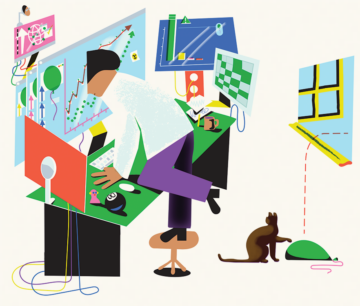 In my work as an analyst for the Forecasting Research Institute, and as a member of the forecasting collective Samotsvety, I’ve had plenty of opportunities to see how forecasters err. By and large, these mistakes fall into two categories. The first mistake is in trusting our preconceptions too much. The more we know — and the more confident we are in our knowledge — the easier it is to dismiss information that doesn’t conform to the opinions we already have. But there’s a more insidious second kind of error that bites forecasters — putting too much store in clever models that minimize the role of judgment. Just because there’s math doesn’t make it right.
In my work as an analyst for the Forecasting Research Institute, and as a member of the forecasting collective Samotsvety, I’ve had plenty of opportunities to see how forecasters err. By and large, these mistakes fall into two categories. The first mistake is in trusting our preconceptions too much. The more we know — and the more confident we are in our knowledge — the easier it is to dismiss information that doesn’t conform to the opinions we already have. But there’s a more insidious second kind of error that bites forecasters — putting too much store in clever models that minimize the role of judgment. Just because there’s math doesn’t make it right.
More here.
The war in Gaza is creating a health crisis that will span decades
Grace Wade in New Scientist:
 The situation in Gaza is rapidly devolving into the worst humanitarian crisis in modern memory, and international health organisations have no long-term plans for addressing the territory’s post-war needs.
The situation in Gaza is rapidly devolving into the worst humanitarian crisis in modern memory, and international health organisations have no long-term plans for addressing the territory’s post-war needs.
More than three-quarters of Gaza’s 2.2 million residents, half of whom are children, are internally displaced, trapped in one of the most densely populated areas in the world with minimal access to food, water or healthcare. Since 7 October, when Hamas militants from Gaza invaded Israel and killed more than 1000 civilians, Israel has intensely bombed the enclave, hindered the flow of humanitarian aid and decimated civilian infrastructure. As a result, more than 30,000 Palestinians have died in Gaza – mostly women and children – according to the United Nations, and more than 72,000 have been injured.
Yet, these figures signal only the beginning of the public health catastrophe. Those who survive the war will face lifelong health effects.
More here.
Demis Hassabis on Scaling, Superhuman AIs, AlphaZero atop LLMs
Larry Summers on What Went Wrong on Campus
Yascha Mounk and Larry Summers on Persuasion podcast:
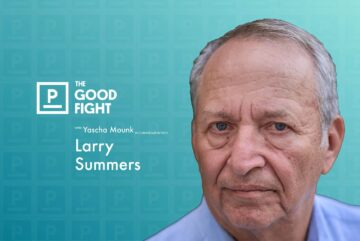 Larry Summers: Paul Samuelson famously said that if he would be allowed to write the economics textbooks, he didn’t care who would get to perform as the finance ministers going forward. So I think what happens in universities is immensely important. And I think there is a widespread sense—and it is, I think, unfortunately, with considerable validity—that many of our leading universities have lost their way; that values that one associated as central to universities—excellence, truth, integrity, opportunity—have come to seem like secondary values relative to the pursuit of certain concepts of social justice, the veneration of certain concepts of identity, the primacy of feeling over analysis, and the elevation of subjective perspective. And that has led to clashes within universities and, more importantly, an enormous estrangement between universities and the broader society.
Larry Summers: Paul Samuelson famously said that if he would be allowed to write the economics textbooks, he didn’t care who would get to perform as the finance ministers going forward. So I think what happens in universities is immensely important. And I think there is a widespread sense—and it is, I think, unfortunately, with considerable validity—that many of our leading universities have lost their way; that values that one associated as central to universities—excellence, truth, integrity, opportunity—have come to seem like secondary values relative to the pursuit of certain concepts of social justice, the veneration of certain concepts of identity, the primacy of feeling over analysis, and the elevation of subjective perspective. And that has led to clashes within universities and, more importantly, an enormous estrangement between universities and the broader society.
When the president of Harvard is a figure on a Saturday Night Live skit, when three presidents of universities combine to produce the most watched congressional hearing film clip in history, when applications to Harvard fall in a several-month period by more they’ve ever fallen before, when alumni are widely repudiating their alma mater, when they’re the subject of as many legal investigations as the Boeing company, you have a real crisis in higher education. And I think it’s been a long time coming because of those changes in values that I was describing.
More here.
A.I. Is Learning What It Means to Be Alive
Carl Zimmer in The New York Times:
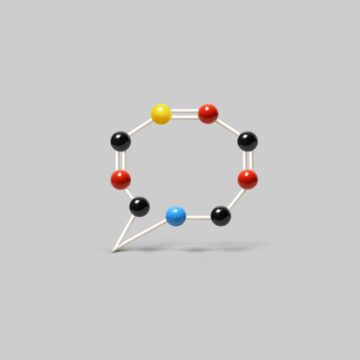 In 1889, a French doctor named Francois-Gilbert Viault climbed down from a mountain in the Andes, drew blood from his arm and inspected it under a microscope. Dr. Viault’s red blood cells, which ferry oxygen, had surged 42 percent. He had discovered a mysterious power of the human body: When it needs more of these crucial cells, it can make them on demand. In the early 1900s, scientists theorized that a hormone was the cause. They called the theoretical hormone erythropoietin, or “red maker” in Greek. Seven decades later, researchers found actual erythropoietin after filtering 670 gallons of urine. And about 50 years after that, biologists in Israel announced they had found a rare kidney cell that makes the hormone when oxygen drops too low. It’s called the Norn cell, named after the Norse deities who were believed to control human fate. It took humans 134 years to discover Norn cells. Last summer, computers in California discovered them on their own in just six weeks.
In 1889, a French doctor named Francois-Gilbert Viault climbed down from a mountain in the Andes, drew blood from his arm and inspected it under a microscope. Dr. Viault’s red blood cells, which ferry oxygen, had surged 42 percent. He had discovered a mysterious power of the human body: When it needs more of these crucial cells, it can make them on demand. In the early 1900s, scientists theorized that a hormone was the cause. They called the theoretical hormone erythropoietin, or “red maker” in Greek. Seven decades later, researchers found actual erythropoietin after filtering 670 gallons of urine. And about 50 years after that, biologists in Israel announced they had found a rare kidney cell that makes the hormone when oxygen drops too low. It’s called the Norn cell, named after the Norse deities who were believed to control human fate. It took humans 134 years to discover Norn cells. Last summer, computers in California discovered them on their own in just six weeks.
The discovery came about when researchers at Stanford programmed the computers to teach themselves biology. The computers ran an artificial intelligence program similar to ChatGPT, the popular bot that became fluent with language after training on billions of pieces of text from the internet. But the Stanford researchers trained their computers on raw data about millions of real cells and their chemical and genetic makeup. The researchers did not tell the computers what these measurements meant. They did not explain that different kinds of cells have different biochemical profiles. They did not define which cells catch light in our eyes, for example, or which ones make antibodies.
More here.
